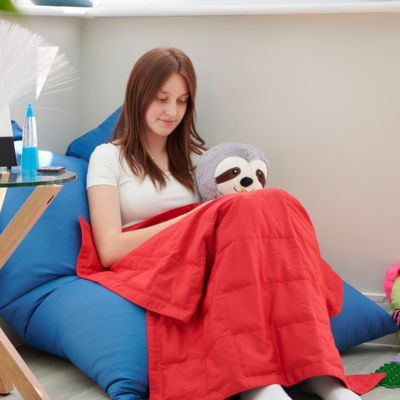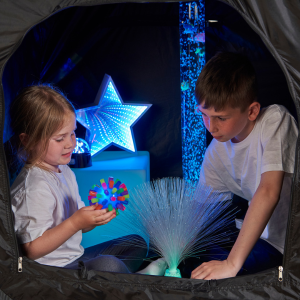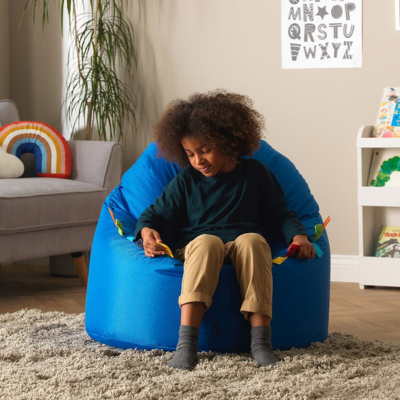Get exclusive deals you won't find anywhere else straight to your inbox.

Coping Strategies For Sensory Overload
This blog discusses coping strategies for sensory overload. Sensory overload can be an overwhelming experience, especially for individuals with sensory sensitivities, such as those with autism spectrum disorders or sensory processing disorder. Sensory overload can occur at school, home, or in any environment where sensory stimuli are present. It can lead to stress, anxiety, and even meltdowns if not managed effectively. In this article, we'll explore some practical strategies to cope with sensory overload in both school and home settings.

Understanding Sensory Overload
Before diving into coping strategies, it's essential to understand what sensory overload is. Sensory overload happens when the sensory input a person receives becomes too much for their nervous system to process. This can result from too much sensory stimuli or stimuli that are too intense for an individual to handle comfortably. These stimuli can include sounds, lights, textures, smells, and even social interactions.
Coping Strategies at School
- Create a Sensory-Friendly Environment - Collaborate with teachers and school staff to create a sensory-friendly classroom environment. This may include reducing harsh lighting, minimising noise, and providing sensory tools such as fidget toys or sensory putty. Ear defenders or ear buds are particularly helpful in reducing distressing or loud noises. This can create a more comfortable environment to work in
- Sensory Breaks - Schedule regular sensory breaks during the school day. These breaks can offer students a chance to decompress in a quiet, calming space where they can engage in sensory self-regulation activities. Use tools such as bubble tubes and bubble walls to create a calm environment. If space is limited, try a pop up sensory den. This can be easily put in the corner of a classroom or dedicated space and then removed and stored when not in use. Use sensory lights, projectors and hand held lights inside the den to really help relax and calm.
- Visual Supports - Visual schedules and social stories can help students with sensory sensitivities navigate their school day more effectively. These tools provide a clear and predictable structure. Visual aids such as communication fans provide a quick and easy way.
- Communication - Encourage open communication between students, teachers, and parents. Allow students to express their sensory needs and preferences, so teachers can make necessary accommodations
- Social Skills Training - Offer social skills training to help students develop coping strategies for managing social interactions that may contribute to sensory overload. Social stories and communication aids can assist in social skills training.

Coping Strategies at Home
- Sensory-Friendly Home Environment:
- Create a sensory-friendly home environment by reducing clutter, maintaining a consistent routine, and providing sensory-friendly items such as weighted blankets or calming sensory rooms.
- Sensory Diet:
- Develop a sensory diet tailored to the individual's needs. This may include sensory activities like swinging, deep pressure, or tactile stimulation to help regulate sensory input. Use tools such as weighted blankets, sensory brushes and deep pressure vests.
- Calming Techniques:
- Teach and practice calming techniques like deep breathing exercises, mindfulness, or progressive muscle relaxation to help manage sensory overload when it occurs. Incorporate vibration or massage tools to help soothe and calm.
- Limit Sensory Triggers:
- Identify and limit sensory triggers in the home environment. For example, use noise-cancelling headphones during noisy activities or dim the lights during evening routines.
- Establish a Safe Space:
- Designate a specific area in the home as a safe space where the individual can retreat when feeling overwhelmed. A sensory den is ideal if you have limited space. Ensure the den is stocked with sensory tools and calming activities, such as calming sensory lights, fidgets and maybe a bean bag.

Conclusion
Coping with sensory overload in school and at home requires a combination of understanding, planning, and communication. By creating sensory-friendly environments, providing sensory tools, and teaching coping strategies, individuals with sensory sensitivities can better manage their sensory experiences. Collaborating with educators, therapists, and family members is essential to tailor these strategies to each individual's unique needs. With the right support and strategies in place, it is possible to navigate both school and home life with greater comfort and ease, reducing the impact of sensory overload on daily life.

